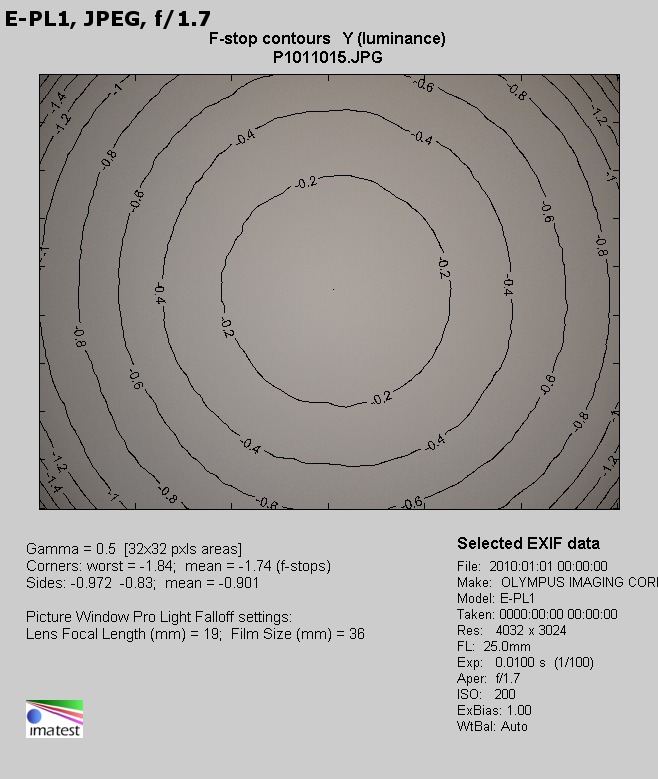Panasonic Lumix G 25 mm f/1.7 ASPH.
8. Vignetting
| Olympus E-PL1, f/1.7 | Olympus E-PL1, f/2.0 |

|

|
| Olympus E-PL1, f/2.8 | Olympus E-PL1, f/4.0 |

|

|
You can notice the vignetting without any problems at the maximum relative aperture because it reaches 45% (−1.74 EV). It is a high level but still lower than that of the slower Olympus 1.8/25. On the other hand some 1.8/50 class lenses designed for smaller sensors can have a lower vignetting level so the result of the Panasonic is nothing to be proud of.
Please Support UsIf you enjoy our reviews and articles, and you want us to continue our work please, support our website by donating through PayPal. The funds are going to be used for paying our editorial team, renting servers, and equipping our testing studio; only that way we will be able to continue providing you interesting content for free. |
- - - - - - - - - - - - - - - - - - - - - - - - - - - - - - - - - - - - - - - - - - - - - - - -
On stopping down the aperture to f/2.0 you see the vignetting decrease to 37% (−1.32 EV), and after employing a relative aperture of f/2.8 that aberration amounts to 29% (−0.97 EV). The light fall-off becomes invisible by f/4.0, where it reaches only 8% (−0.25 EV).
The vignetting is not corrected by the software of the camera and in RAW files the situation looks very much the same. The results you get there are still by 1-4% higher, mainly because the RAW images have a wider angle of view, as they have to include a margin for distortion correction.
 |






